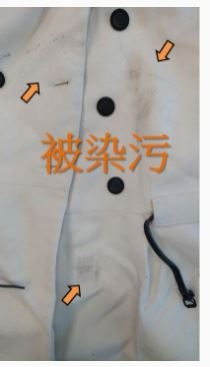Starting from 2000, The Conservancy Association (CA) has been providing Used Clothes Collection (UCC) service for the general public and housing estates. CA and our contractor strive to stick with the principle of waste reduction in handling collected used clothes. Most of the used clothes collected by CA are exported to Southeast Asian countries (e.g. Cambodia) for reuse purposes, while some of them are donated to the people in need or charities. We hope it can contribute to waste reduction and fulfill donors’ wish of helping others simultaneously. As a green group, we are willing to accept monitoring from all sectors in the society, and we also remain open-minded on the issue of environmental works and maintaining transparency of information whenever possible. Recently, we have received quite a number of enquiries from the public, media organizations and journalists, which inspired us to share the actual situation of UCC in depth through this platform.

In recent years, the prevalence of fast-fashion has indirectly increased the amount of collected used clothes, but the quality is inconsistent. The fast-fashion cycle has also changed from 4 seasons in the past to nearly 52 seasons a year, which means new products are launched every week, with the market often unable to digest it. On top of that, the sewage from blenching and dyeing, soil pollution and greenhouse gas emissions caused by the fast-fashion industry has also put a huge pressure on ecological environment. But try to imagine, who would think of these environment costs when donating or collecting used clothes? Therefore, we sincerely appeal to all of you that we should avoid supporting the fast-fashion culture and think twice on what are your “wants” and “needs” before making each purchase. Ultimately, the most important message is to buy clothes based on your needs. In addition, the outbreak of COVID-19 has dealt a severe blow to the used clothes recycling industry due to the implementation of lockdown measure among some Southeast Asian countries. Started in the mid-2020, the restriction on border circulation has affected the import-export activities, thus the collected used clothes were accumulated at the local warehouse due to the lockdown (see picture below). As a result, CA decided to temporarily suspend most of our UCC services until the first quarter of 2021. When the UCC service resumed later in April, there was yet another challenge of oversupply in the market as the entire recycling industry in Hong Kong had accumulated large amount of clothes. Moreover, the exporting requirement has become more stringent due to the improved quality of life for Southeast Asian countries in recent years. Clothes that began to turn yellow, looks old or with pilling will be regarded as non-reusable clothing. After discussing with our recycler, we can only cater to the exporting requirement and carry out a basic screening before the clothes are exported.
In fact, if we roughly classified those collected used clothes according to their reusability, around but not less than 85% of them could be exported to Southeast Asian countries (i.e. Cambodia) for reuse purpose. However,there are still 15% of used clothes that cannot be exported and need to be disposed due to undesirable conditions such as tattered, worn, obvious stain(s), moldy, smelly, wet, etc. (see picture below). In order to promote full utilization of resources, some of the non-reusable used clothes will be reused by our colleagues as materials of upcycling. However, it is just a drop in the ocean when comparing with the amount of incoming non-reusable used clothes every month.

Sometimes, we feel helpless on the issue of how to handle the moldy, smelly, or contaminated clothing. The reason is that these clothes are not suitable to reuse and needed to be disposed. As for how to dispose them, we are indeed facing a dilemma. When our recyclers find these unqualified clothes, they usually take them out so as not to affect other clean clothes. On the one hand, it might raise a suspicion of wasting resources and our recycling work would even be tarnished if we disposed these unqualified clothes to the nearby public refuse collection point. Alternatively, if these clothes were brought back to the warehouse for further processing, it will greatly increase the cost and time (the first step is to “weight”, then deducting the weight of unqualified clothes for record after they went back to warehouse). After that, they would take out the unqualified clothes and transport them to the refuse collection point for disposal. This not only increases the workload of the recycling staff, the clean clothes may also easily get contaminated by these unqualified clothes during transit, which is not a cost-efficient logistic arrangement. In the past, we have received complaints from some members of the public that they felt they were deceived when they saw the recycling staff screening some of the recyclables on the ground. In this case, we can only explain the actual situation to them, however, not everyone is willing to accept it. From our perspective, we do not want to undermine public confidence in the entire used clothes recycling industry because of the above incidents.Moreover, it is not easy to build up the reputation and trust which require longstanding and unremitting efforts. At the same time, we also understand the difficulties of the entire recycling industry. To avoid causing any misunderstanding among the public, we finally reached a consensus with our recycler that we should avoid screening used clothes or picking out unqualified clothes on the spot, even if it’s slightly more convenient. We, The Conservancy Association, would like to remind members of the public not to put unwashed or unqualified clothes into recycling banks for convenience sake as it actually affects those who practiced proper recycling procedures. If everyone is willing to become a responsible donor by putting proper and clean recycling into practice, then our UCC work could be much smoother where misunderstandings could also be avoided.


